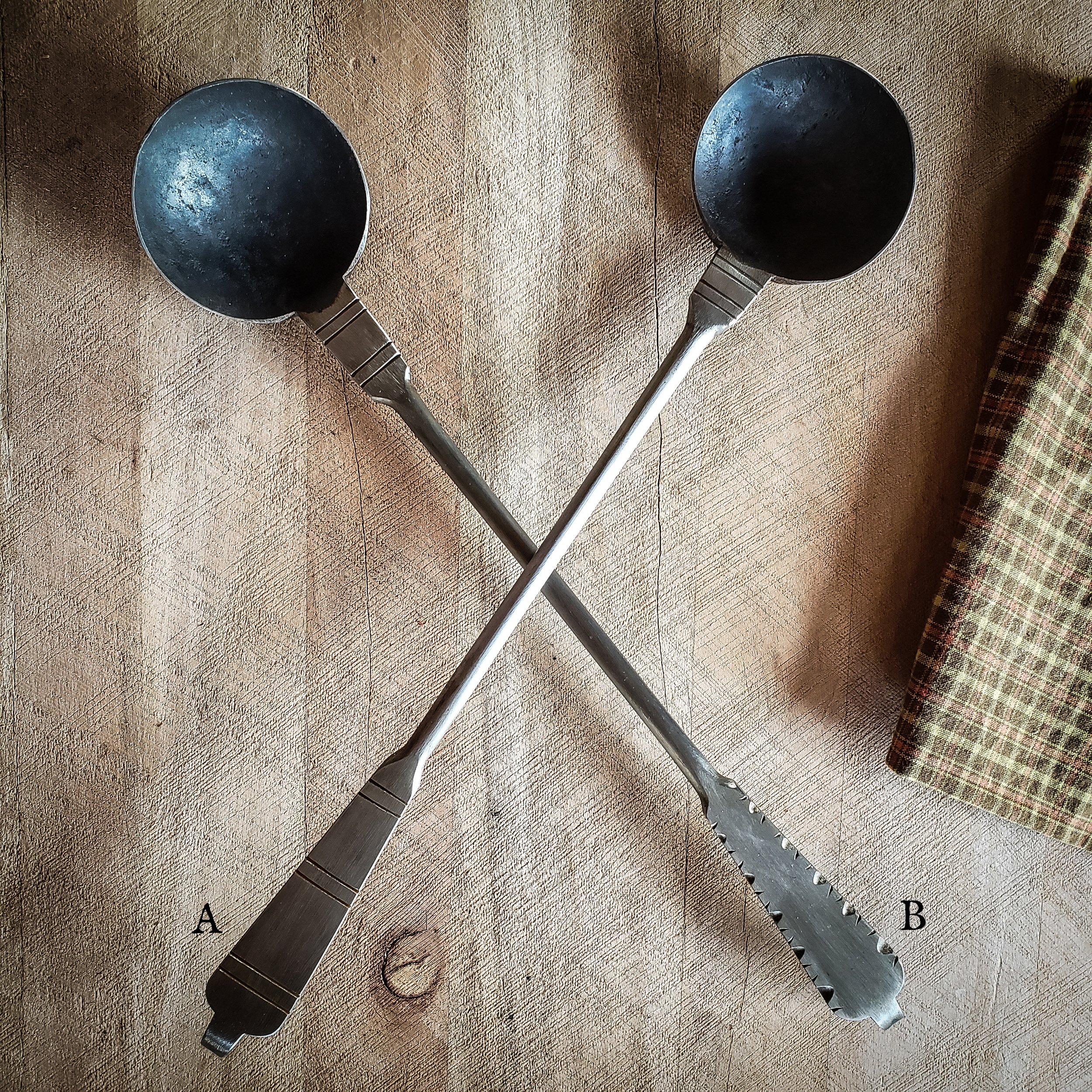Care and Use of hand-forged Cooking Utensils
Iron and carbon steel cooking utensils have served cooks well for centuries, and with proper care, this hand-forged utensil will last for generations. Unlike modern stainless steel utensils -and yet not unlike cast iron skillets and fine high carbon chef’s knives- hand wrought utensils have a character unmatched in modern materials, but that comes with it’s own quirks and care needs.
A few things to know: If used in contact with highly acidic foods such as tomato, lemon, onion, and etc, the utensil can impart a harmless yet sometimes annoying metallic taste to the food- especially if left sitting in the pot or bowl. Being iron, rust is inevitable, but can be managed and even avoided to a great deal by proper maintenance. Patina can be allowed to develop as well, which leaves the utensil more resistant to rust and with the look of many years of use and love. But then, as many cooks in times past preferred, the work of the whitesmith can add to a feeling of brilliant cleanliness at the hearth or in the kitchen if kept brightly polished.
Some general Dos and Don’ts:
Don’t wash in a dishwasher, leave in a sink of dishes or water, or drip dry. Instead, hand wash with warm water and very little soap (to allow the iron to season), and immediately hand dry and coat with food grade oil- or paste wax like that sold for cutting boards and wooden spoons. Keep oiled when not in use. Avoid letting food dry on the spoon- frequent rinses during use aren’t a bad idea. Avoid leaving in highly acidic foods- in centuries past, wooden utensils would be preferred in those cases. If you want to keep the bright surfaces of your hand-wrought utensils bright, keep some polishing pads or steel wool in grades 000 and 0000 around, and take off any tarnish or rust as soon as it appears, and add oil or wax immediately. If you have an instance where some rust sneaks up on you and gets too bad for the steel wool to take off, gently take it off with some fine sandpaper or emery cloth in the 180-220 grit range. If you want the piece to patina, keep off any serious rust that feels lumpy, but leave light rust and tarnish and just oil over it, and keep it well-oiled as usual. Enjoy your hand-wrought heirloom, and don’t hesitate to reach out with any further questions!


